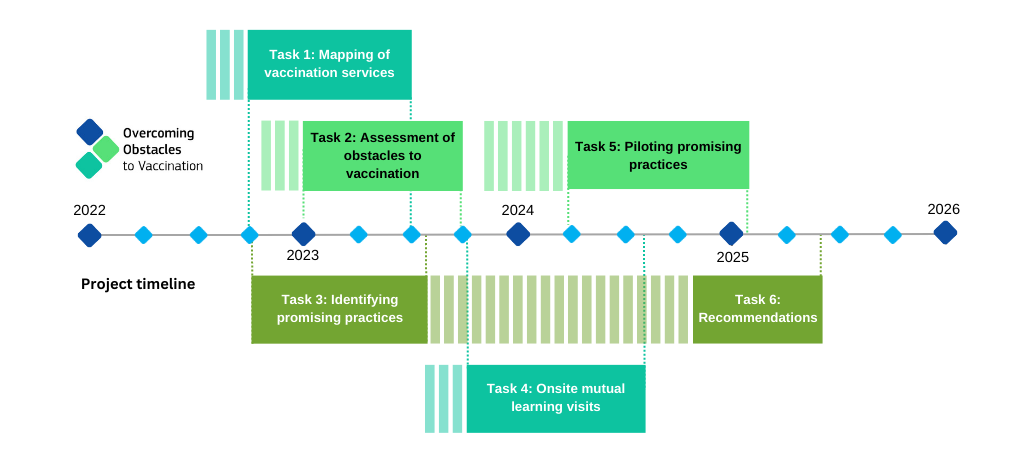Keeping Europe healthy: Addressing obstacles to vaccination

Addressing obstacles to vaccination
In 2022 the European Health and Digital Agency (HaDEA), on behalf of the European Commission, launched the pan-European project ‘Overcoming Obstacles to Vaccination’ to tackle obstacles of physical, practical, and administrative nature to vaccination.
Vaccinations are one tool to prevent infectious disease, but in recent years there has been a decline of vaccination coverage observed across Europe. The European Health and Digital Executive Agency (HaDEA) has launched the Overcoming Obstacles to Vaccination project to identify, understand and make recommendations to reduce barriers to vaccination.
The project consists of mapping vaccination services in all EU Member States, specifically for seven vaccines: COVID-19; Human papillomavirus (HPV); Influenza; Measles, Mumps, Rubella (MMR); Meningitis; Polio; and Tetanus. The aim is to identify and assess the impact of obstacles to vaccination; share and pilot best practices across the EU to overcome those obstacles; and develop recommendations for overcoming obstacles to vaccination.
To achieve the aims, the project is divided into several tasks.
Project tasks
Task 1: Mapping of vaccination services in all EU Member States to identify obstacles to vaccination
Under this task, the project will work with healthcare authorities and experts to identify the range of barriers that separate groups of citizens are facing to access vaccine schemes. This task will feed into other project activities by identifying the most problematic convenience-related barriers in each country, find promising practices, and group countries according to similarities in convenience-related barriers.
Task 2: Assessment of obstacles to vaccination and the negative impact on vaccination rates in EU Member States
This task is composed of two surveys
- Large-scale survey among citizens in all EU Member States, who are best placed to point out factors that could prevent them from getting vaccinated.
- Large-scale survey among healthcare professionals, who are best placed to point out factors that patients and parents/legal guardians refer to when talking to them about vaccination and that could possibly prevent them or their child from getting vaccinated.
Task 3: Identify promising practices to overcome obstacles to vaccination
Using criteria developed by the European Commission, the project will collect interventions that are considered as best/most promising practices to overcome physical, practical, and administrative obstacles to vaccination. Submitted by health authorities from across the EU Member States, these practices highlight national, regional, and local vaccination practices. A shortlist of five best/most promising practices will be selected to be used for onsite mutual learning visits.
Task 4: Onsite mutual learning visits
Five onsite visits will be organised to the EU Member States whose promising practices have been identified. These onsite visits will be an opportunity for other EU Member States to visit and learn more about the selected promising practices, as well as exchange knowledge and experience with health experts from other Member States.
Task 5: Pilot best practices in volunteering EU MS
As a result of the onsite visits, three of the five promising practices will be piloted in three clusters of nine volunteering EU Member States.
Task 6: Develop final recommendations for overcoming obstacles to vaccination
Insights gained from the previous project tasks, will feed into a set of final recommendations to overcome obstacles to vaccination of physical, practical, or administrative nature in EU Member States. These recommendations will be tailored to different actors, including policymakers at EU and national level, competent health authorities in EU Member States, and EU and national health professionals’, patients’, citizens’, and other such organisations.
An overview of the project timeline is presented below.

You can find out more about the project by visiting the ‘About’ webpage.
Interested in following the latest project developments? Follow the project on LinkedIn.
